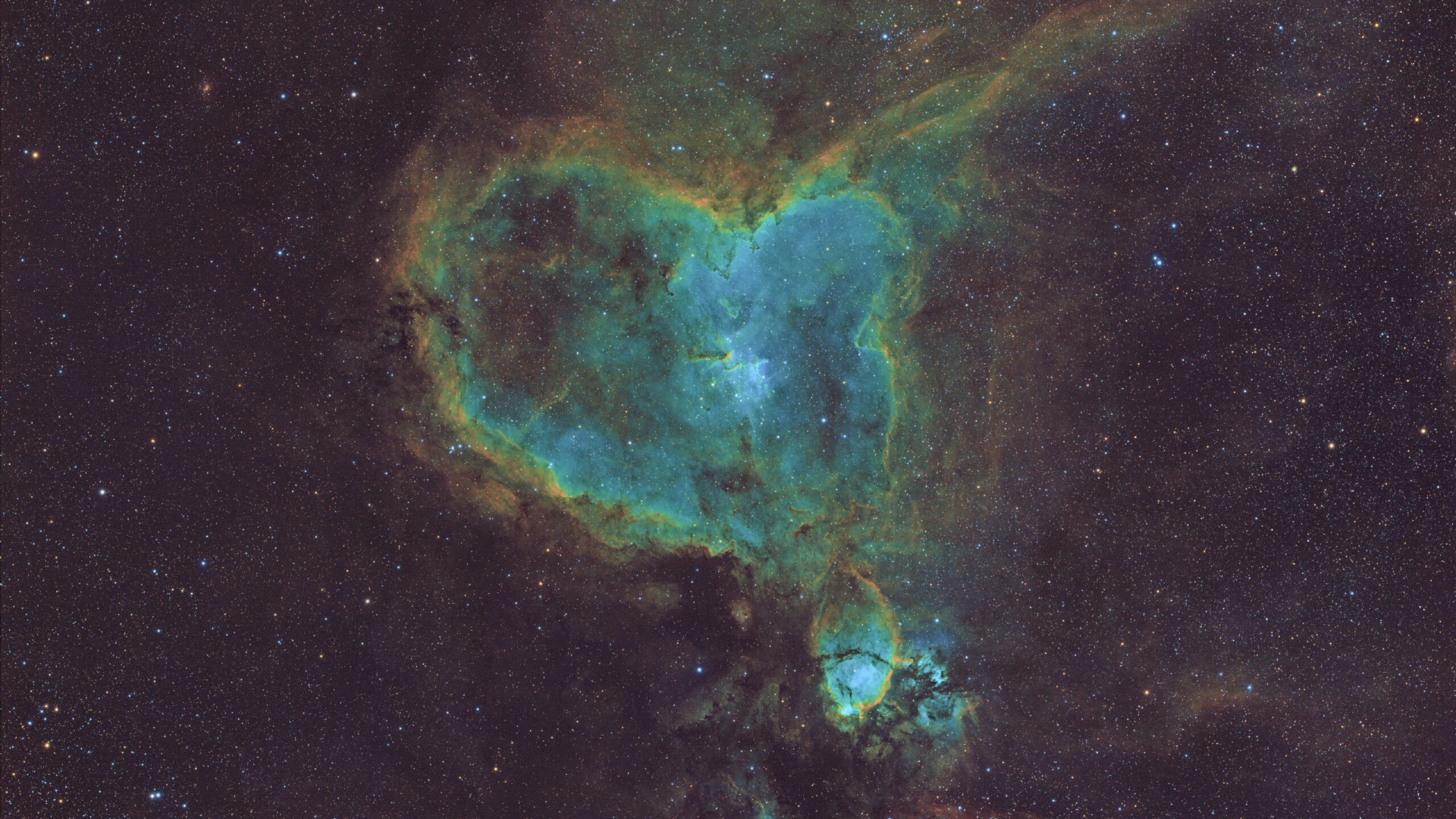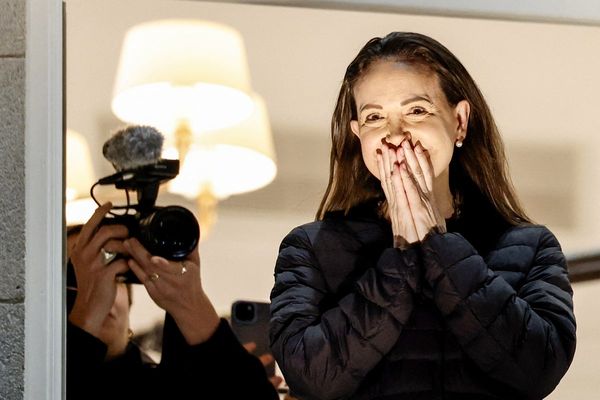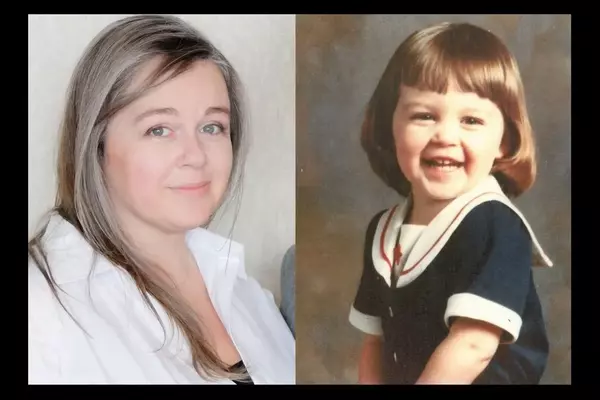
Astrophotographer Ronald Brecher has captured a colorful view of the Heart Nebula (IC 1805), which is located some 6,000 light-years from Earth in the Perseus spiral arm of the Milky Way.
The Heart Nebula is a colossal star-forming region named for its resemblance to a cartoonish representation of the human heart. The center of the nebula plays host to a population of energetic young stars that are busily sculpting dense pillars of dust with their radiation. It can be found just 5 degrees away from the bright star Segin in the constellation Cassiopeia — roughly the width of your three middle fingers held at arm's length — which can be found high above the northern horizon around midnight in October.
Hanging below the vast cosmic heart is a knot of dust and gas known informally as the Fishhead Nebula, thanks to its vaguely oval outline and a dark dust filament that gives it the appearance of an aquatic creature.
Brecher collected light from the distant nebula scene from his home in Guelph, Canada using an astronomy camera mounted on a Sky-Watcher Esprit 70 EDX refractor telescope over the course of over 40 hours in September earlier this year.
The colorful scene was captured with the help of a set of astrophotography filters, each of which were designed to capture specific wavelengths of light that were subsequently assigned individual colors during the post processing phase. The end result is a magnificent snapshot of deep space, created from particles of light that had travelled thousands of years to reach their destination.
Stargazers interested in capturing their own images of the night sky should check out our roundups of the best telescopes and astrophotography lenses and cameras available in 2025.
Editor's Note: If you would like to share your astrophotography with Space.com's readers, then please send your photo(s), comments, and your name and location to spacephotos@space.com.







